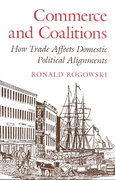Question
Question 1 In the following examples, do you believe that the main driving force for the location of production is economies of scale or comparative
Question 1
In the following examples, do you believe that the main driving force for the location of production is economies of scale or comparative advantage:
- The presence of two automotive companies, Volvo and Saab, in Sweden.
- The presence of a textile industry in Bangladesh.
- The large number of coffee growers in Tanzania and Kenya on the slopes of Kiliman-jaro.
- That 70% of all lighters in the world are produced in the Chinese city of Wenzhou.
- The many nightclubs around Stureplan in Stockholm compared to, for example, Grdet.
Question 2
Consider figure 7-4 in the book. Imagine that Vietnam would close its trade in buttons with other countries. Would prices in Vietnam increase or decrease? (Hint: this depends on the size of the Vietnamese domestic demand).
Question 3
Consider, again, figure 7-4 in the book. Assume that Vietnam maintains free trade in buttons but that its current output in this industry is zero due to competition from China. Now, the Vietnamese government decides to subsidise its button industry (this causes Vietnam's supply curve to shift downwards). Will this be successful?
Economies of scale change the conclusions from some of the traditional trade models and can be used to understand phenomena such as intra industry trade, cluster formation and economic geography.
- Use the monopolistic competition model with internal economies of scale (Chapter 8) to analyse the effect of trade liberalisation (between two identical countries) in the car sector, assuming that this sector is characterised by internal economies of scale (due to 1 fixed costs) and product differentiation. How and why does welfare change? What can we say about the location of firms?
- If you would instead look at the watch industry and assume that this industry is characterised by external economies of scale and technological spillovers between firms (chapter 7), what would the effect of trade liberalisation on welfare be (use the external economy model)? What can we say about the location of firms?
Question 5 (foreign investment)
If there are internal economies of scale, why would it ever make sense for a firm to produce the same good in more than one production facility?
Question 6
Consider the model where firms have different levels of marginal cost (page 215 and onwards in the book, the section in the book labelled "Firm Responses to Trade: Winners, Losers, and Industry Performance"). Explain why trade liberalisation has the same effect on an economy as an increase in the aggregate productivity of an economy (i.e. that the average output per worker increases).



Step by Step Solution
There are 3 Steps involved in it
Step: 1

Get Instant Access to Expert-Tailored Solutions
See step-by-step solutions with expert insights and AI powered tools for academic success
Step: 2

Step: 3

Ace Your Homework with AI
Get the answers you need in no time with our AI-driven, step-by-step assistance
Get Started


